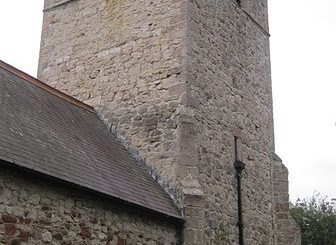Peel Castle
Located on St Patrick’s Isle, Peel, Isle of Man, the castle is reached over a causeway. The castle buildings are now in ruin but the outer walls are mostly intact. The first fortifications were built by the King Magnus Barelegs of Norway in the 11th Century. The Viking castle was made of wood, though there were earlier Celtic monastic structures on the island. The main round tower was originally part of the Celtic monastery.
![Keith Ruffles [CC BY 3.0 (https://creativecommons.org/licenses/by/3.0)]](http://www.mysteriousbritain.co.uk/wp/wp-content/uploads/2008/07/Peel_Castle_-_panoramio-300x225.jpg) The wooden fortifications were eventually replaced with sandstone. After the Vikings the castle was used by the Church but was abandoned in the 18th century. In 1860 the castle was extended with new defensive emplacements.
The wooden fortifications were eventually replaced with sandstone. After the Vikings the castle was used by the Church but was abandoned in the 18th century. In 1860 the castle was extended with new defensive emplacements.
There is a giant legend attached to the castles construction. A giantess was carrying the one of the bigger sandstone blocks used to build the castle in her apron with some other stones. The apron strings snapped and the collection of blocks she had fell into the harbour.
The Moddey Dhoo or Black Dog is supposed to haunt Peel Castle. Leeds Castle in Kent is also haunted by a Black Dog. What these two fortifications have in common is the fate of Eleanor Cobham, Duchess of Gloucester and wife to the Lord Protector who was tried and convicted of witchcraft and treason circa 1440. She was held at Leeds for a short time prior to her trial and then incarcerated in Peel Castle for life where she spent her final fourteen years in captivity.
One legend of the Moddey Dhoo is based in the reign of King Charles II (1660-1685). The Moddey Dhoo would appear each night and sit by the fire in the guardroom. No one would walk around the castle alone at night for fear of this large black hound and even the patrolling armed soldiers went in pairs. One night a drunken young soldier declared that he would walk the castle passages alone to see if the hound was just a dog or perhaps the devil incarnate. He took the castle key to deliver it to the Captain of the Guard, the Moddey Dhoo got up from the fire and followed him. The soldiers screams shortly rang out around the castle. The young guard man returned alive but terrified and would not speak for the next three days. Then he died. It is possible he died of fright. From that day on, no guard saw the Moddey Dhoo again.




Re: Peel Castle
The Haunted Homes and Family Traditions of Great Britain by John Ingram (1897)
In no portion of the British kingdom are legends more rife, and superstitions more tenacious, than in the Isle of Man. Of the various romantic ruins which bedeck the island, and around which tradition has flung its ivy-like tendrils, none are more picturesque or more closely connected with mediaeval myths than Peele Castle. Among other marvellous stories told of the supernatural beings which haunt its precincts is the following, to be found in the pages of Waldron, whose account of the island is an inexhaustible mine of Manx legendary and folk lore.
"An apparition, which they call the Manthe Doog, in the shape of a shaggy spaniel, was stated to haunt the Castle in all parts, but particularly the guard-chamber, where the dog would constantly come and lie down hy the fire at candle-light. The soldiers lost much of their terror hy the frequency of the sight ; yet, as they believed it to be an evil spirit, waiting foi an opportunity to injure them, that belief kept them so far in order, that they refrained from swearing and discourse in its presence, and none chose to be left alone with such an insidious enemy. Now, as the Manthe Doog used to come out and return- by the passage through the church, by which also somebody must go to deliver the keys every night to the Captain, they continued to go together, he whose turn it was to do that duty being accompanied by the next in rotation.
"But one of the soldiers, on a certain night, being much disguised in liquor, would go with the key alone, though it really was not his turn. His comrades in vain endeavoured to dissuade him; he said he wanted the Manthe Doog’s company, and he would try whether he were dog or devil ; and then, after much profane talk, he snatched up the keys and departed. Some time afterwards a great noise alarmed the soldiers, but none of them would venture to go and see what was the cause. When the adventurer returned, he was struck with horror and speechless, nor could he even make such signs as might give them to understand what had happened to him, but he died, with distorted features, in violent agony. After this none would go through the passage, which was soon closed up, and the apparition was never more seen in the castle."
"This accident happened about three-score years since," says Waldron, "and I heard it attested by several, but especially by an old soldier, who assured me he had seen it (i.e. the Manthe Doog), oftener than he had then hairs on his head."
Re: Peel Castle
LEGEND OF THE BLACK DOG, MODDEY DOO
Whence! and what art thou?–Milton.
Through one of the old churches in Peel Castle, there was formerly a passage to the apartment belonging to the Captain of the Guard, but it is now closed up. An apparition, called in the Manx language, "The Mauthe Doo," in the shape of a large black spaniel with curled shaggy hair, was used to haunt Peel Castle; and has been frequently seen in every room, but particularly in the Guard Chamber, where, as soon as candles were lighted, it came and lay down before the fire in the presence of all the soldiers, who at length, by being so much accustomed to the sight of it, lost great part of the terror they were seized with at its first appearance. They still, however, retained a certain awe, as believing it was an evil spirit, which only waited permission to do them hurt, and for that reason forbore swearing and all profane discourse while in its company. But though they endured the shock of such a guest when altogether in a body, none cared to be left alone with it. It being the custom, therefore, for one of the soldiers to lock the gates of the Castle at a certain hour, and carry the keys to the Captain, to whose apartment, as I said before, the way led through a church, they agreed among themselves, that whoever was to succeed the ensuing night, his fellow in this errand should accompany him that went first, and, by this means, no man would be exposed singly to the danger; for I forgot to mention that the Mauthe Doo was always seen to come from that passage at the close of day, and return to it again as soon as the morning dawned, which made them look on this place as its peculiar residence. One night, a fellow being drunk, and by the strength of his liquor rendered more daring than ordinary, laughed at the simplicity of his companions, and, although it was not his turn to go with the keys, would needs take this office upon himself to testify his courage. All the soldiers endeavoured to dissuade him, but the more they said, the more resolute he seemed, and swore that he desired nothing more than that Mauthe Doo would follow him, as it had done the others, for he would try if it were Dog or Devil. After having talked in a very reprobate manner for some time, he snatched up the keys and went out of the Guard-room. In some time after his departure, a great noise was heard, and no one had the boldness to see what had occasioned it, till the adventurer returning, they demanded the knowledge of him; but as loud and noisy as he had been at leaving them, he was now become sober and silent enough, for he was never heard to speak more; and though all the time he lived, which was three days, he was entreated by all who came near him, either to speak, or if he could not do that, to make some signs, by which they might understand what had happened to him, yet nothing intelligible could be got from him, only that, by the distortion of his limbs and features, it might be guessed that he died in agonies more than is common in a natural death. The Mauthe Doo was, however, never seen after in the Castle, nor would anyone attempt to go through that passage, for which reason it was closed up, and another way made.–This happened about 1666.–Waldron.
"Phantom dogs," says Campbell, "abound in Celtic stories." In many of them the hound or dog plays an important part. "Sometimes he befriends his master, at other times he appears to have something diabolical about him; it seems as if his real honest nature had overcome a deeply-rooted prejudice, for there is much which savours of detestation, as well as of strong affection. Dog, or son of the dog, is a term of abuse in Gaelic as elsewhere, though cuilein is a form of endearment, and the hound is figured beside his master or at his feet, on many a tombstone in the Western Isles. Hounds are mentioned in Gaelic poetry and Gaelic tales, and in the earliest accounts of the Western Isles."
[Folk-Lore of the Isle of Man (1891) by A.W. Moore]
Re: Peel Castle
Of all the mythical personages mentioned in this chapter, the only one remaining in the Folk-Lore of the present day is Manannan, and even about him comparatively little is known. He is usually called Maninagh "the Manxman," and is supposed to have been the first man in Man, which he protected by a mist. If, however, his enemies succeeded in approaching in spite of this, he threw chips into the water, which became ships. His stronghold was Peel Castle, and he was able to make one man on its battlements appear as a thousand. Thus he routed his enemies. These, together with the notion that he went about on three legs at a great pace, are all the popular ideas about Manannan which still survive.
[Folk-Lore of the Isle of Man (1891) by A.W. Moore]
Re: Peel Castle
English Fairy and Other Folk Tales by Edwin Sidney Hartland [1890]
In the Isle of Man it is called the Mauthe Doog, and, according to tradition, was accustomed to haunt Peel Castle, where it was seen in every room, but especially in the guard-chamber. Here, as soon as candles were lighted, it used to go and lie down before the fire, in presence of the soldiers, who became so accustomed to its appearance, that they lost much of the awe which they first felt at its presence. But knowing its malicious character, they never ventured to molest it, till one of them, in a drunken fit, swore that "he would try whether it were dog or devil!" He made his trial, and was instantly sobered, but rendered speechless. He lived only three days afterwards, and then "died in agonies more than is common in a natural death." "I heard this attested," says Mr. Waldron, "by several, but especially by an old soldier, who assured me he had seen it oftener than he had then hairs on his head." Sir Walter Scott, in his Lay of the Last Minstrel, thus alludes to this tradition
"For he was speechless, ghastly, wan,
Like him, of whom the story ran,
Who spoke the spectre-hound in Man."